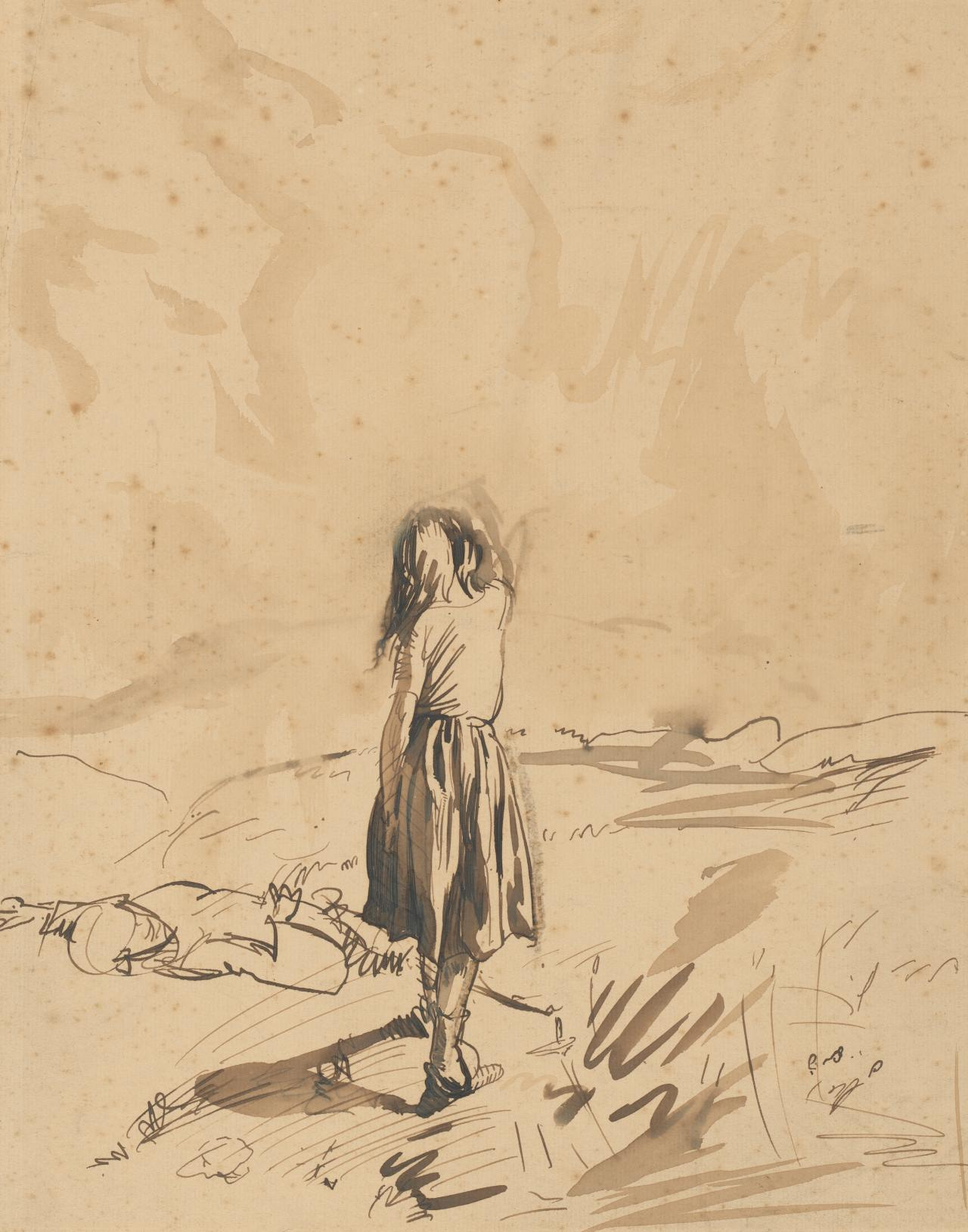The Romantic Setting
The real lure of Brontë country is the moorland…Wuthering Heights consists largely of dialogue; it is the reader who supplies most of the romantic setting.1
It is true—it is the reader who teases out the romance. Brontë provides subtle details; we imagine the rest. We ourselves must conjure the moorland ramblings of Catherine and Heathcliff, inspired by scant details—mostly shared during bouts with delirium.
Brontë weaves elements from Nature into every page. This is certainly a beautiful country! exclaims Lockwood, encouraging us to imagine our setting.
We believe him. And, our imaginations begin to wander—to ramble. Winter winds and chilling cold monopolize much of the story, rainstorms, too. Ah! Mentions also, of the greening of spring and the warmth of summer will bring to mind walks on the moors. Carefree afternoons, irresponsibility and adolescence.
Who isn’t capable of recalling carefree days? Pure, innocent affection one surprisingly feels for someone else—an individual outside of one’s self, yet often, of one’s self. And it is in childhood we and our companions are the most alike, are we not?
Childhood is romantic.
We crave fairy-tales and so, we create them. Ellen Dean recalls The Story of Heathcliff and we envision a moorland landscape of heather, stretching out as far as the eye can see. Beneath a clear blue sky, of course. Brontë provides glimpses of the truth, and we are surprised when reality includes skeletons of starved baby birds.
Adulthood is Unromantic
The separation of Catherine and Heathcliff reminds me of that period in grade school when we are placed in cohorts; we begin to form new relationships based on maturity, interests and intellect.
When the Lintons’ bulldog seizes Catherine, she is pulled into an entirely new social class. Literally. She returns to Heathcliff as someone he does not recognize: no longer a mirror of himself. Fifteen-year-old Catherine now covets stable marriage and status; Heathcliff wants only to ramble, wild and free.
In Chapter I, Heathcliff is an adult. Brontë provides just enough information to tempt us into reading further. Heathcliff is single; a surly landowner of considerable wealth. Brontë will show us how he gained his status and his wealth and we will be appalled.
What to Expect…
Honesty. I do not fit in.
Here, there will be no corset-clad heroines and chiseled, bodice-ripping hulks. Having read the novel dozens of times, I promise I will never spin Wuthering Heights as sexy.
I love Wuthering Heights. Emily Jane Brontë crafted a beautiful novel. Flawed human beings, living in a remote part of northern England (the West Yorkshire moors) are its cast of characters, and every individual is complex.
In my opinion, it is The Story of Heathcliff. And so, I write a lot about Heathcliff.
While the idea of a man loving a woman so deeply he literally cannot live without her is certainly romantic—it is not sexy. There is no sex. Nary a bodice is ripped. Rarely a mouth is kissed. Brontë is so masterful in designing her story she arouses in readers, a desire to create and imagine dishy details and romantic rambles. It’s why authors and screenwriters fabricate what is called fan fiction and film adaptation.
As a moon-watcher and meadow-wanderer, Nature has my heart. I share essays illuminating Brontë’s relationship with the natural world. I’m currently working on writing The Natural History of Wuthering Heights.
Currently, my library includes over three dozen editions of Wuthering Heights, published over many decades. I’m currently studying artists and illustrators associated with the novel since its publication in 1847.
Brontë’s literary influences + love of ghost stories and how her upbringing + beliefs shaped her poetry and prose is always of great interest to me.
☛ Content Warning
Wuthering Heights contains Gothic narrative themes and episodes including, but not limited to: paranormal activity, grief, trauma, death, domestic violence, and madness.
The Atlas of Literature. United States, Stewart, Tabori & Chang, 1998. (my italics)
Image: National Gallery of Victoria, Melbourne
Felton Bequest, 1945
© the artist’s estate
This digital record has been made available on NGV Collection Online through the generous support of the Joe White Bequest




I adore your choice of illustrations, they are some of the best I've seen on any Substack
So far it seems to me that there is very little nature description or ourdoor scenes in WH--talk about the weather, and the pleasures of the wild outdoors, but most of the action is indoors. I haven't counted and compared, just an impression.